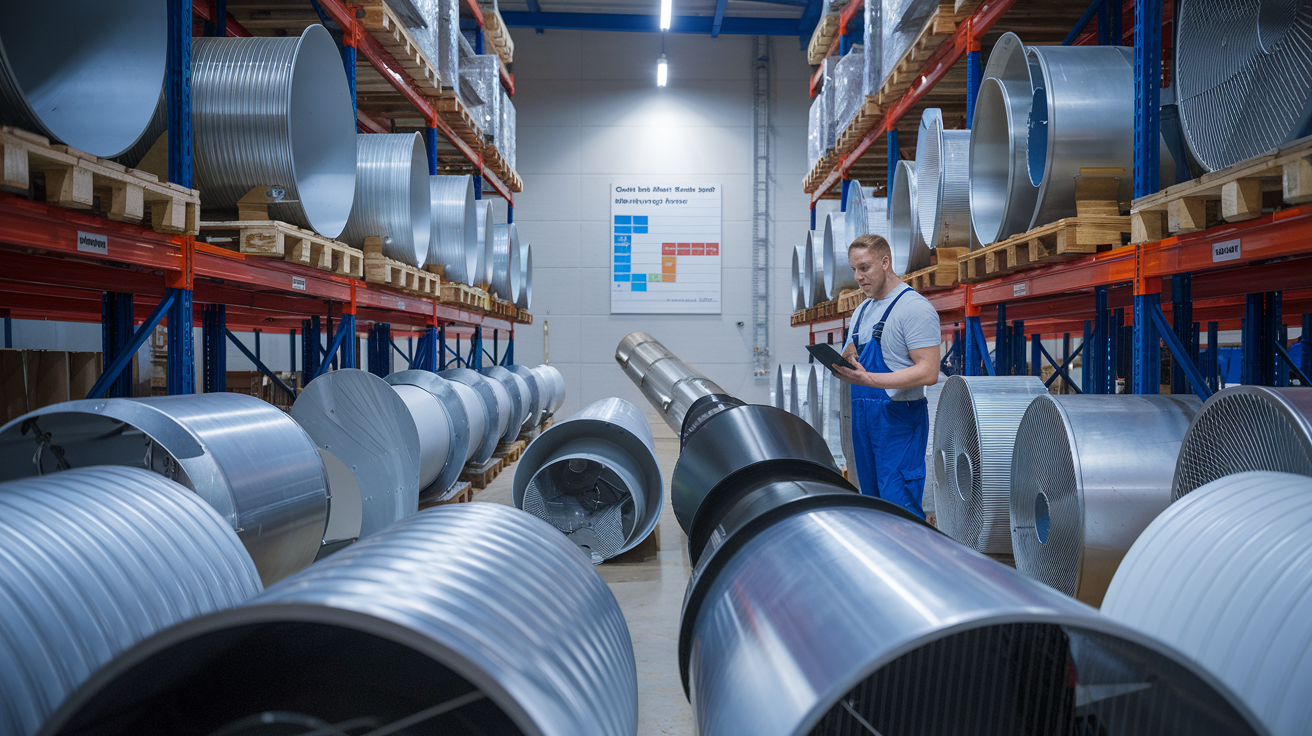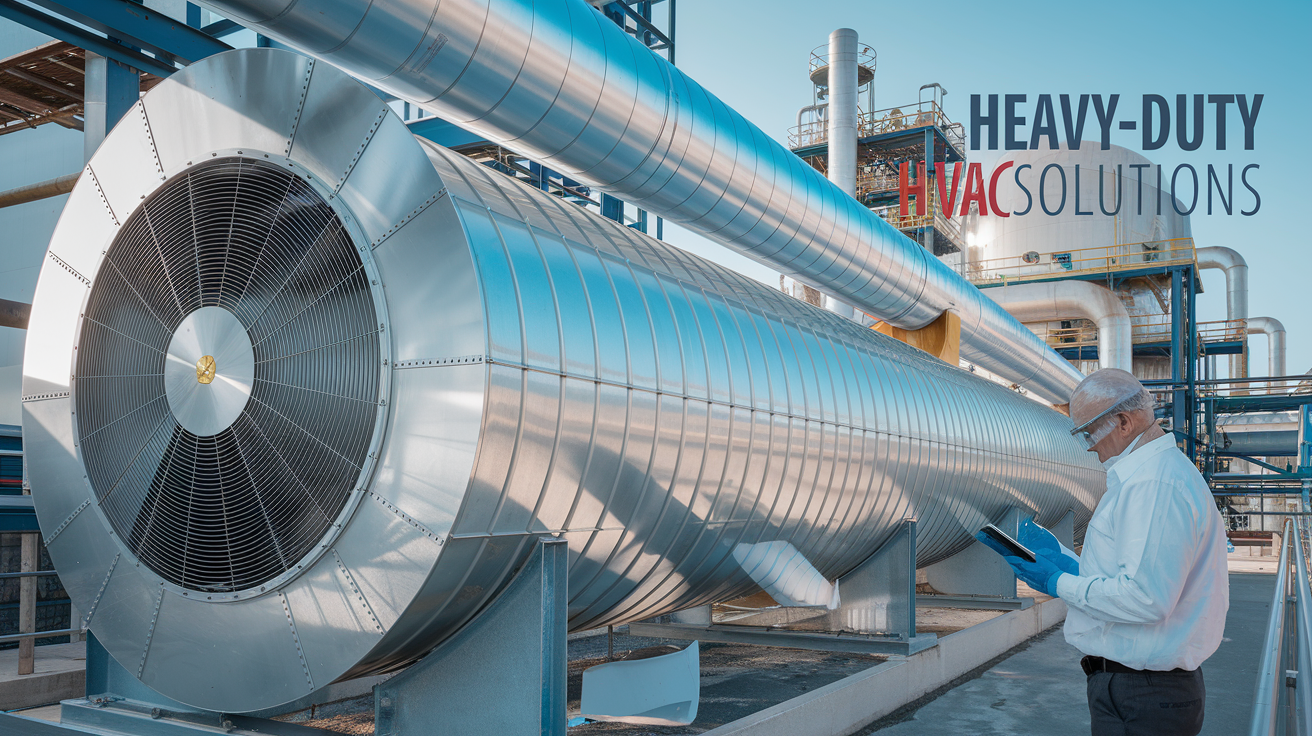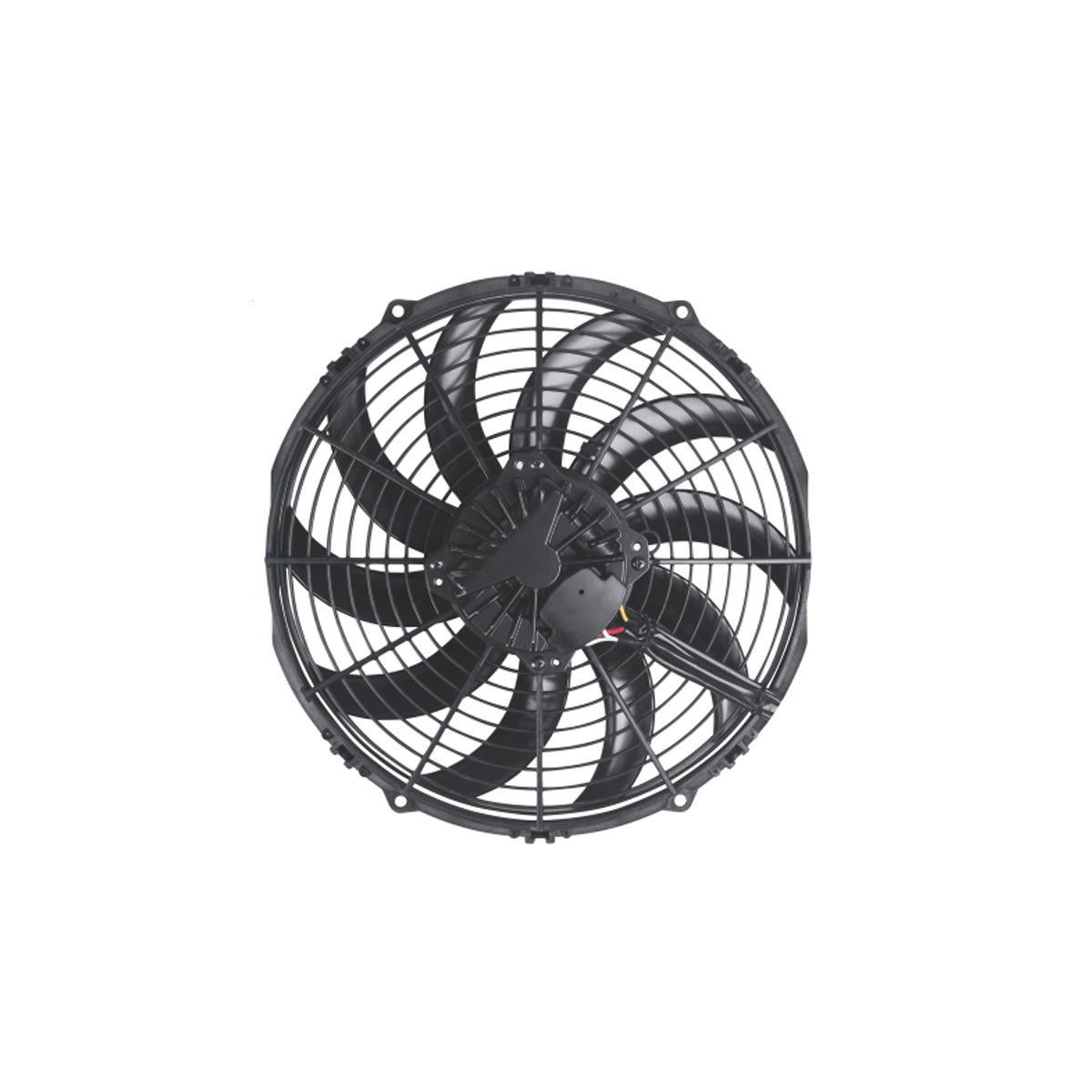Enter corrosion-resistant axial fan ducts – the unsung heroes of heavy-duty HVAC systems. These robust components are designed to stand up to the toughest environments, ensuring your HVAC system runs smoothly for years to come. Whether you’re dealing with chemical plants, coastal areas, or food processing facilities, these specialized ducts offer a game-changing solution for HVAC professionals and facility managers alike.
In this comprehensive guide, we’ll dive deep into the world of corrosion-resistant axial fan ducts, exploring everything from material types and design considerations to installation tips and emerging trends. We’ll also uncover wholesale solutions that can help you save big on your next HVAC project. So, buckle up as we embark on a journey to discover how these heavy-duty components can revolutionize your HVAC systems and put an end to corrosion woes once and for all! 💪🔧
Understanding Corrosion-Resistant Axial Fan Ducts
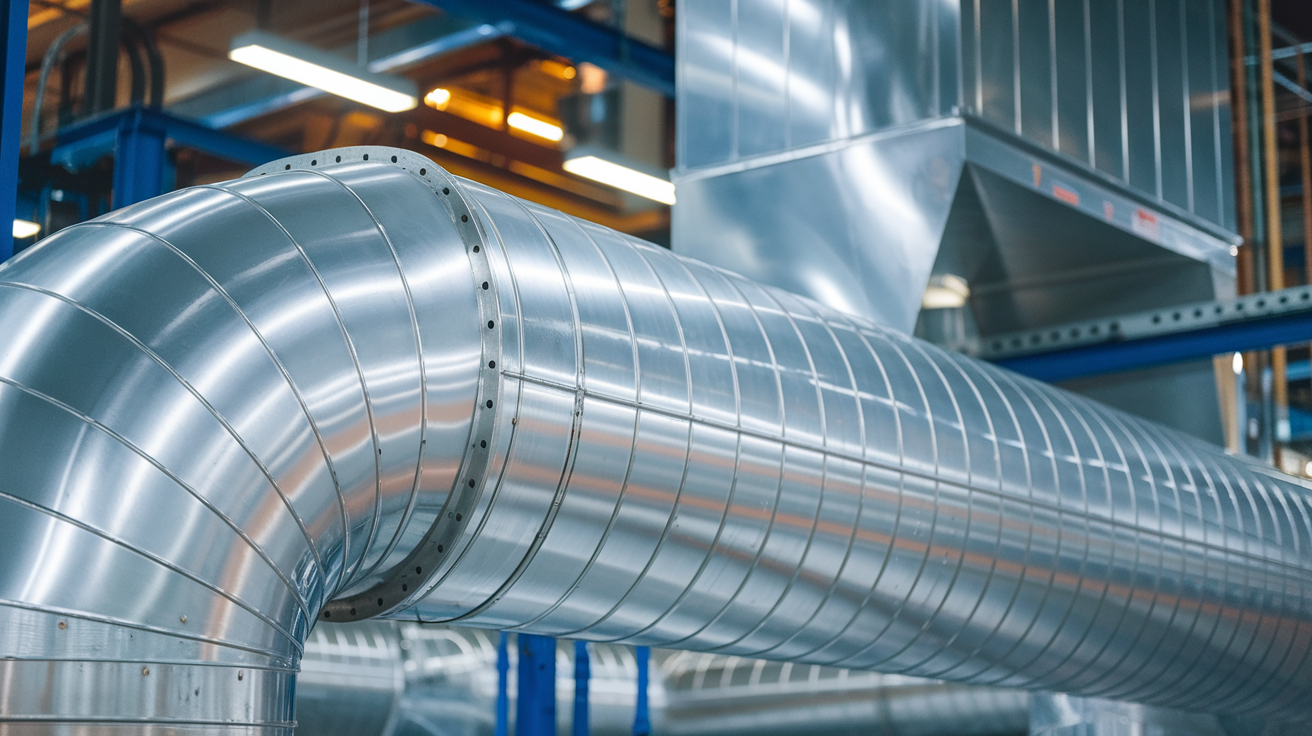
Definition and importance in HVAC systems
Corrosion-resistant axial fan ducts are specialized components designed to withstand harsh environments while efficiently moving air in HVAC systems. These ducts play a crucial role in maintaining air quality and system performance, especially in heavy-duty applications. By resisting corrosion, they ensure longevity and reliability, reducing maintenance costs and downtime.
Key features of corrosion-resistant materials
| Material | Corrosion Resistance | Durability | Cost |
|---|---|---|---|
| Stainless Steel | High | Excellent | High |
| Aluminum | Good | Good | Moderate |
| Fiberglass | Excellent | Very Good | Moderate |
| PVC | Excellent | Good | Low |
These materials offer varying degrees of protection against chemical attack, moisture, and environmental factors, ensuring the integrity of axial fan ducting in challenging conditions.
Benefits for heavy-duty applications
-
Extended lifespan of HVAC systems
-
Reduced maintenance requirements
-
Improved air quality and system efficiency
-
Enhanced safety in corrosive environments
-
Cost-effective long-term solution
Common industries and environments requiring these solutions
Corrosion-resistant axial fan ducts are essential in various industries and environments, including:
-
Chemical processing plants
-
Coastal and marine installations
-
Wastewater treatment facilities
-
Food and beverage production
-
Pharmaceutical manufacturing
-
Mining operations
-
Pulp and paper mills
These industries often deal with corrosive chemicals, high humidity, or salt-laden air, making corrosion-resistant axial fan ducting a critical component of their HVAC systems. Now that we’ve explored the fundamentals of corrosion-resistant axial fan ducts, let’s examine the various types of materials used in their construction.
Types of Corrosion-Resistant Materials for Axial Fan Ducts
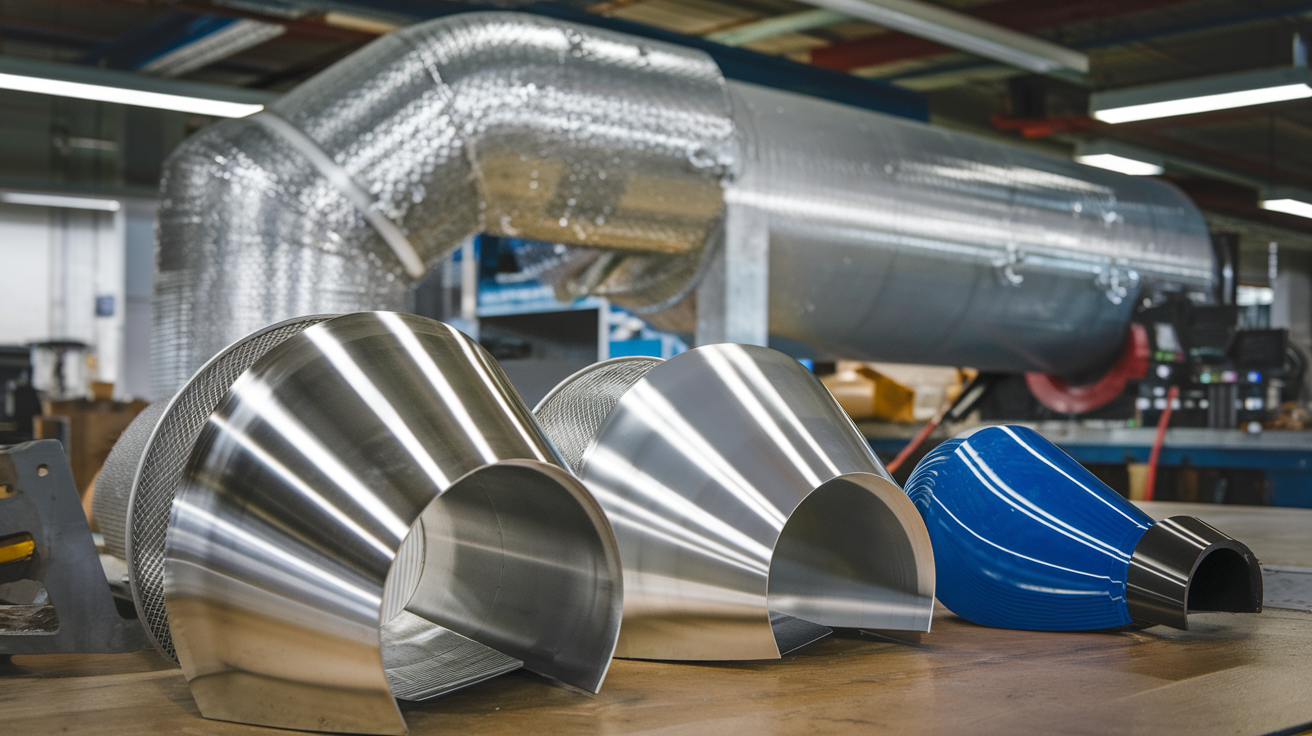
Stainless steel options
Stainless steel is a popular choice for corrosion-resistant axial fan ducting due to its exceptional durability and resistance to various corrosive environments. There are several grades of stainless steel suitable for HVAC applications:
-
304 Stainless Steel: Commonly used for general-purpose applications
-
316 Stainless Steel: Offers superior corrosion resistance, ideal for harsh environments
-
321 Stainless Steel: Stabilized grade, resistant to intergranular corrosion
Aluminum alloys
Aluminum alloys provide an excellent balance of corrosion resistance and lightweight properties for axial fan ducting:
-
3003 Aluminum: Good corrosion resistance and formability
-
5052 Aluminum: Higher strength and better corrosion resistance than 3003
-
6061 Aluminum: Versatile alloy with good strength and corrosion resistance
Specialized coatings and treatments
Various coatings and treatments can enhance the corrosion resistance of axial fan ducts:
-
Powder coating
-
Epoxy coating
-
Galvanization
-
Anodizing (for aluminum)
Composite materials
Composite materials offer unique advantages for corrosion-resistant axial fan ducting:
-
Fiberglass Reinforced Plastic (FRP)
-
Carbon Fiber Reinforced Polymer (CFRP)
-
Vinyl Ester Resins
Comparison of durability and cost-effectiveness
| Material | Corrosion Resistance | Durability | Cost-Effectiveness |
|---|---|---|---|
| Stainless Steel | Excellent | High | Moderate |
| Aluminum Alloys | Good | Moderate | High |
| Coated Materials | Very Good | Moderate | High |
| Composites | Excellent | High | Low |
When selecting materials for corrosion-resistant axial fan ducting, consider factors such as the specific corrosive environment, required lifespan, and budget constraints. Each material offers unique benefits, and the optimal choice depends on the specific application and operating conditions.
Design Considerations for Heavy-Duty HVAC Ducts
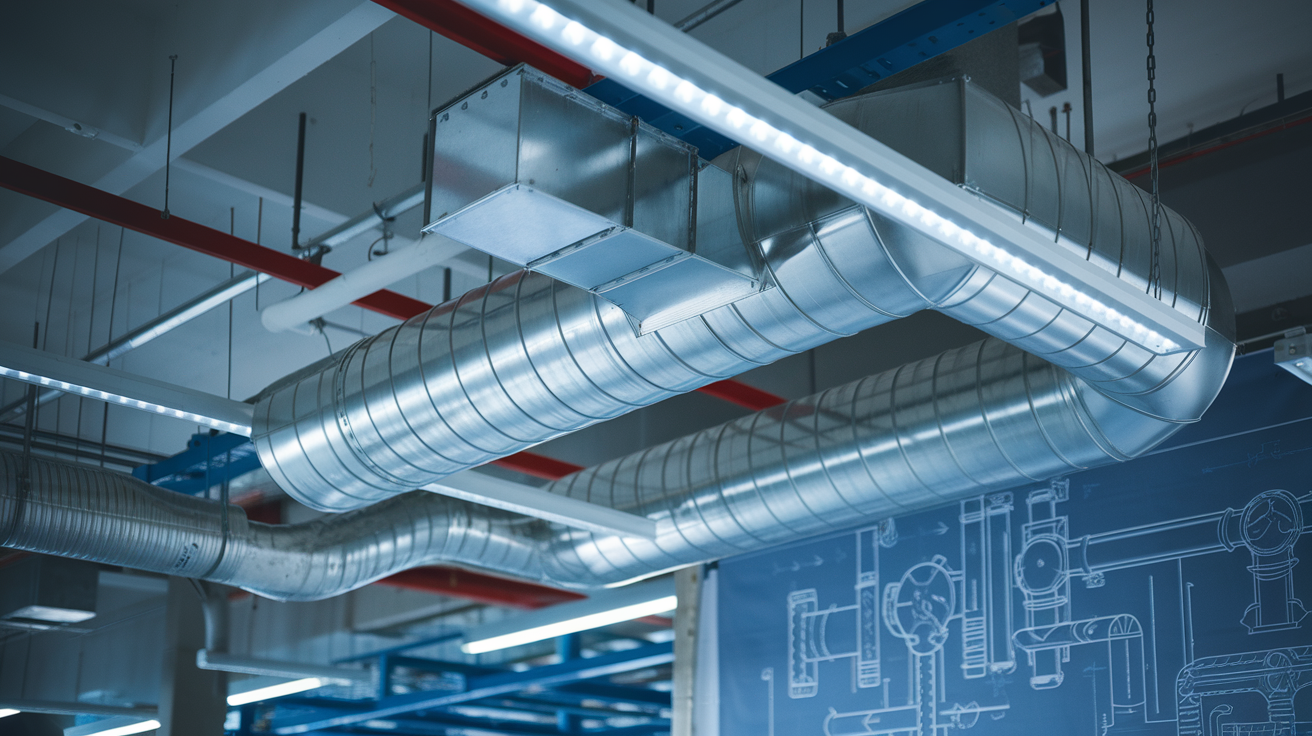
Airflow optimization techniques
Optimizing airflow in heavy-duty HVAC ducts is crucial for system efficiency. Here are key techniques:
-
Streamlined duct design
-
Proper sizing and spacing
-
Minimizing turns and obstructions
| Technique | Benefit |
|---|---|
| Streamlined design | Reduces turbulence |
| Proper sizing | Ensures balanced airflow |
| Minimizing turns | Decreases pressure drop |
Noise reduction strategies
Noise reduction in axial fan ducting is essential for industrial environments:
-
Use acoustic liners
-
Install vibration isolators
-
Implement sound attenuators
-
Design gradual transitions
These strategies can significantly reduce noise levels without compromising system performance.
Energy efficiency improvements
Enhancing energy efficiency in heavy-duty HVAC ducts:
-
Insulate ducts to minimize heat loss
-
Use variable speed drives for fans
-
Implement smart control systems
-
Regular maintenance and cleaning
Customization options for specific industrial needs
Axial fan ducting can be tailored to meet unique industrial requirements:
-
Corrosion-resistant coatings for harsh environments
-
High-temperature materials for extreme conditions
-
Modular designs for easy installation and modification
-
Integration with existing systems
Now that we’ve explored design considerations, let’s examine the installation and maintenance aspects of corrosion-resistant axial fan ducts.
Installation and Maintenance of Corrosion-Resistant Axial Fan Ducts
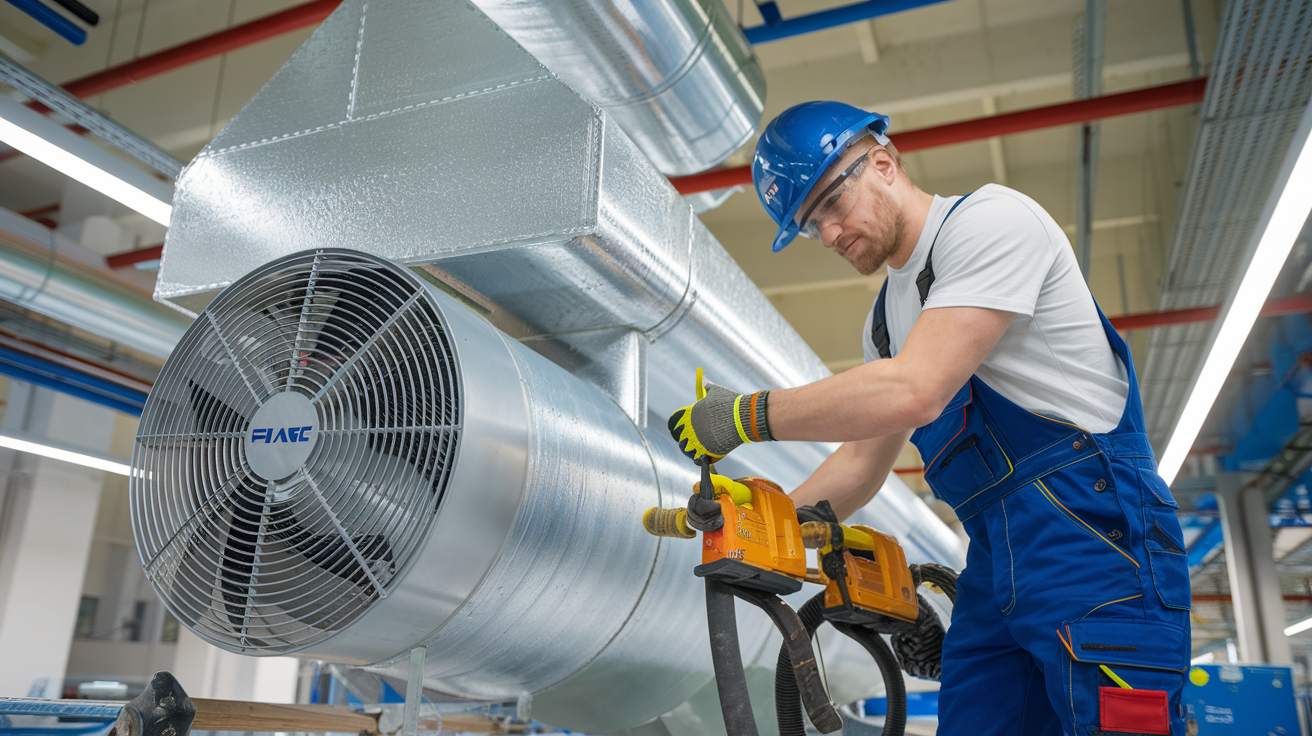
Best practices for proper installation
When installing corrosion-resistant axial fan ducts, following best practices is crucial for optimal performance and longevity. Here are key steps to ensure proper installation:
-
Proper alignment and support
-
Secure connections and sealing
-
Adequate insulation
-
Correct sizing and airflow optimization
| Step | Description |
|---|---|
| Alignment | Ensure ducts are perfectly aligned to minimize air resistance |
| Support | Use appropriate brackets and hangers to distribute weight evenly |
| Connections | Apply sealant at joints to prevent leaks and corrosion |
| Insulation | Install insulation to maintain temperature and prevent condensation |
Regular maintenance procedures
To keep your axial fan ducting in top condition, implement these maintenance procedures:
-
Conduct visual inspections monthly
-
Clean duct interiors quarterly
-
Check and tighten connections bi-annually
-
Inspect and replace insulation as needed
-
Lubricate moving parts according to manufacturer’s guidelines
Troubleshooting common issues
When issues arise with corrosion-resistant axial fan ducts, prompt identification and resolution are essential. Common problems include:
-
Excessive noise
-
Reduced airflow
-
Visible corrosion
-
Leaks at joints
To address these issues, start by identifying the root cause through thorough inspection. Often, tightening loose connections, cleaning debris, or replacing worn components can resolve the problem.
Extending the lifespan of fan ducts
To maximize the longevity of your corrosion-resistant axial fan ducts:
-
Use high-quality materials suited to your environment
-
Implement a regular maintenance schedule
-
Address issues promptly to prevent further damage
-
Monitor and control humidity levels in the system
By following these installation and maintenance guidelines, you can ensure optimal performance and durability of your axial fan ducting system. Regular care and attention will help prevent costly repairs and extend the overall lifespan of your HVAC infrastructure.
Wholesale Solutions for HVAC Professionals
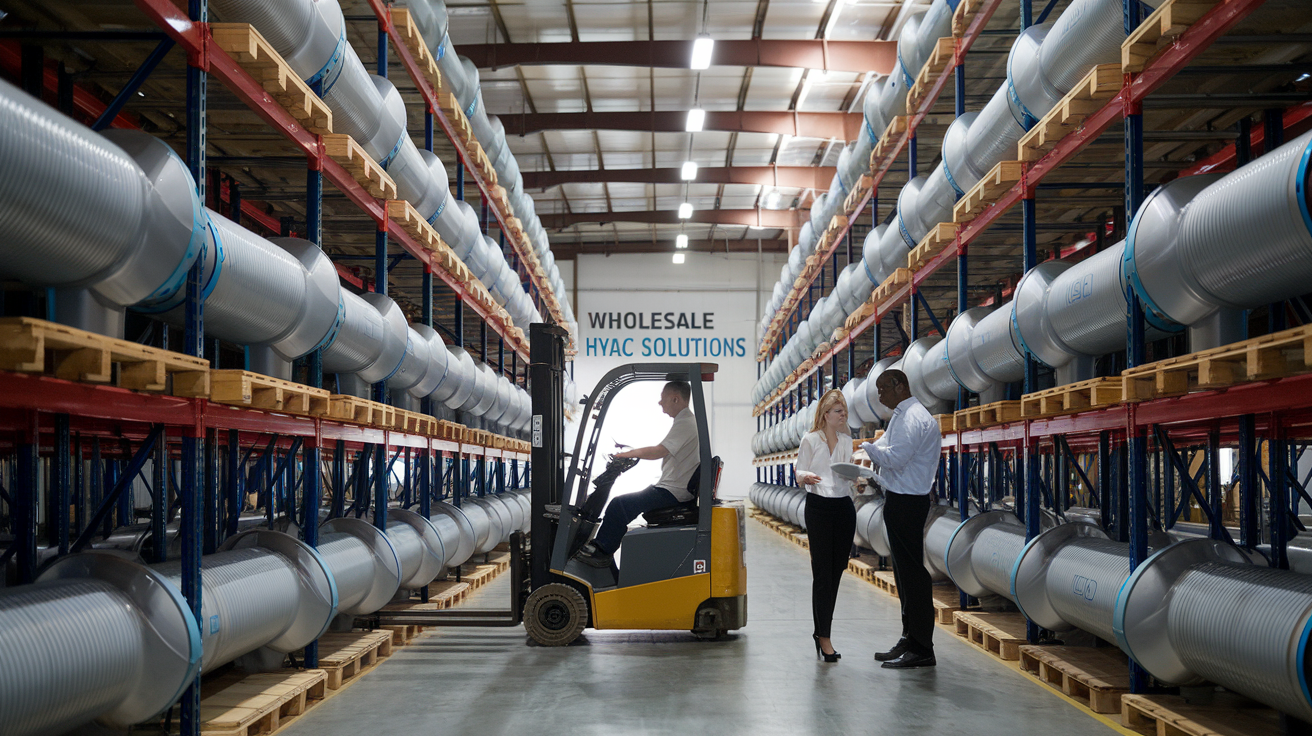
Bulk purchasing advantages
When it comes to axial fan ducting, wholesale solutions offer significant benefits for HVAC professionals. Bulk purchasing can lead to substantial cost savings, allowing businesses to increase their profit margins or pass savings on to customers. Here’s a breakdown of the advantages:
| Advantage | Description |
|---|---|
| Cost Savings | Up to 30% reduction in per-unit cost |
| Inventory Management | Ensures consistent stock availability |
| Standardization | Maintains uniform quality across projects |
| Reduced Shipping Costs | Lower per-item shipping fees |
Customization services for large orders
Large-scale HVAC projects often require tailored solutions. Many wholesale suppliers offer customization services for bulk orders of axial fan ducting, including:
-
Custom dimensions to fit specific project requirements
-
Special coatings for enhanced corrosion resistance
-
Unique connectors or flanges for easier installation
-
Color-coding or labeling for improved organization
Technical support and consultation
Wholesale providers typically offer comprehensive technical support, which is crucial for HVAC professionals dealing with complex corrosion-resistant systems. This support often includes:
-
On-site consultations for large installations
-
Engineering support for custom designs
-
Training sessions on proper installation and maintenance
-
Troubleshooting assistance for challenging environments
Warranty and quality assurance programs
To ensure customer satisfaction and long-term reliability, many wholesale suppliers of axial fan ducting offer robust warranty and quality assurance programs. These programs typically include:
-
Extended warranties for bulk purchases
-
Quality control inspections before shipment
-
Performance guarantees for specified conditions
-
Replacement policies for defective units
With these comprehensive wholesale solutions, HVAC professionals can confidently tackle large-scale projects requiring corrosion-resistant axial fan ducting. Next, we’ll explore the emerging trends in corrosion-resistant HVAC technology that are shaping the future of the industry.
Emerging Trends in Corrosion-Resistant HVAC Technology

Smart monitoring systems
In the realm of corrosion-resistant HVAC technology, smart monitoring systems are revolutionizing the industry. These advanced systems utilize sensors and IoT connectivity to provide real-time data on duct performance and corrosion levels. Here’s a breakdown of key features:
-
Continuous monitoring of humidity, temperature, and air quality
-
Early detection of corrosion onset
-
Predictive maintenance alerts
-
Remote access and control
| Feature | Benefit |
|---|---|
| Real-time data | Immediate issue identification |
| Predictive maintenance | Reduced downtime and costs |
| Remote access | Enhanced operational efficiency |
Advanced material innovations
The axial fan ducting industry is witnessing significant advancements in corrosion-resistant materials. These innovations offer superior protection against harsh environments while maintaining optimal airflow:
-
Nanocoatings: Ultra-thin protective layers that enhance corrosion resistance
-
Graphene-reinforced composites: Lightweight yet durable materials
-
Self-healing polymers: Materials that can repair minor damage autonomously
Sustainability and eco-friendly options
As the HVAC industry moves towards more sustainable practices, corrosion-resistant axial fan ducts are following suit. Emerging trends in this area include:
-
Recyclable and biodegradable materials for duct construction
-
Energy-efficient coatings that reduce heat transfer
-
Low-VOC (Volatile Organic Compound) treatments for improved indoor air quality
These eco-friendly options not only contribute to environmental conservation but also offer long-term cost savings for HVAC professionals and end-users alike. As we explore these emerging trends, it becomes clear that the future of corrosion-resistant HVAC technology is both innovative and sustainable.
Choosing the Right Corrosion-Resistant Axial Fan Ducts

Assessing environmental factors
When choosing corrosion-resistant axial fan ducts, it’s crucial to evaluate the environmental conditions they’ll be exposed to. Consider factors such as:
-
Temperature range
-
Humidity levels
-
Presence of corrosive chemicals
-
Exposure to UV radiation
-
Salt content in coastal areas
| Environmental Factor | Impact on Duct Selection |
|---|---|
| High temperatures | Choose heat-resistant materials |
| Coastal locations | Opt for salt-resistant alloys |
| Chemical exposure | Select chemically inert materials |
| UV radiation | Use UV-stabilized materials |
Calculating required airflow capacity
Accurate airflow calculations are essential for selecting the right axial fan ducting. Consider:
-
Space dimensions
-
Desired air changes per hour
-
Static pressure requirements
-
Specific application needs (e.g., industrial processes)
Evaluating long-term cost savings
While initial costs are important, focus on the total cost of ownership:
-
Energy efficiency ratings
-
Maintenance requirements
-
Expected lifespan of materials
-
Potential downtime costs
Considering compatibility with existing systems
Ensure the new corrosion-resistant axial fan ducts integrate seamlessly with your current HVAC setup:
-
Existing ductwork dimensions
-
Connectors and fittings
-
Control systems compatibility
-
Power supply requirements
Reviewing manufacturer certifications and standards
Look for axial fan ducting that meets or exceeds industry standards:
-
AMCA (Air Movement and Control Association) certifications
-
ASHRAE (American Society of Heating, Refrigerating and Air-Conditioning Engineers) guidelines
-
ISO (International Organization for Standardization) quality management standards
By carefully considering these factors, you can select the most appropriate corrosion-resistant axial fan ducts for your heavy-duty HVAC needs, ensuring optimal performance and longevity.
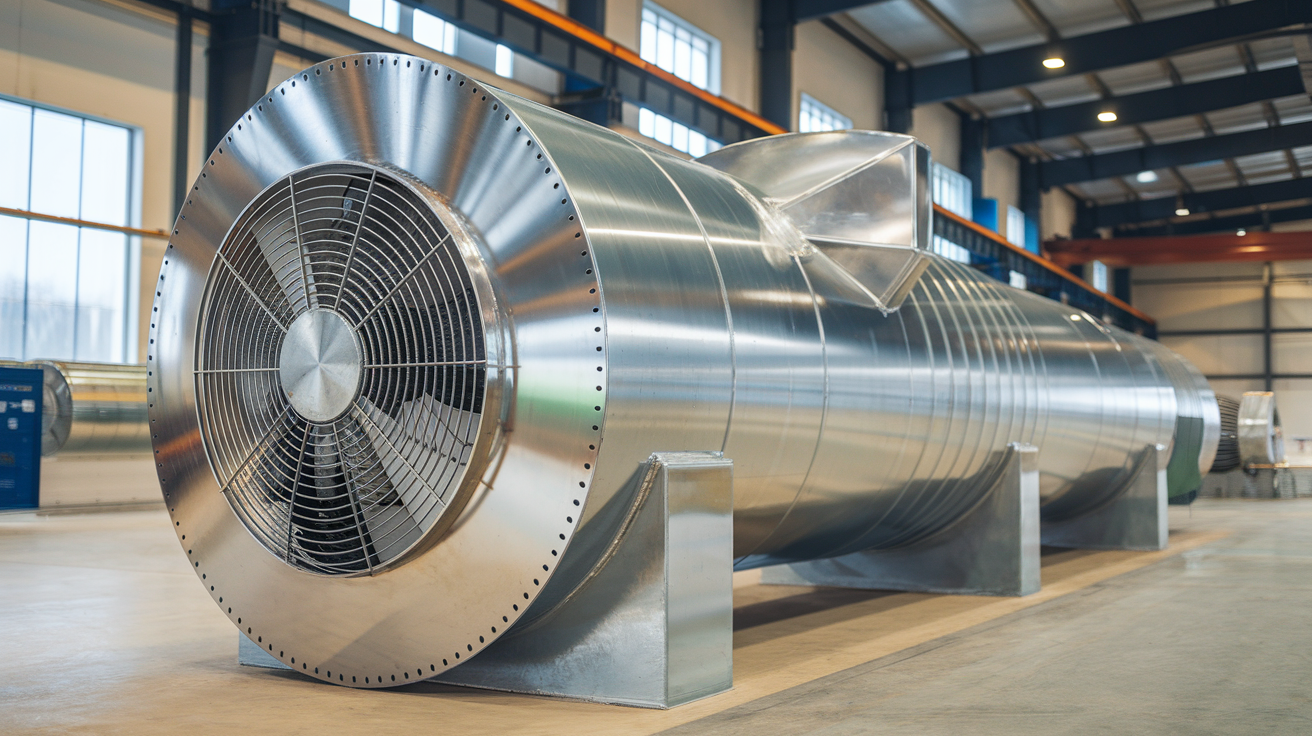
Corrosion-resistant axial fan ducts are a crucial component in heavy-duty HVAC systems, offering durability and longevity in challenging environments. By understanding the various materials, design considerations, and maintenance requirements, HVAC professionals can make informed decisions when selecting and installing these essential components. Wholesale solutions provide cost-effective options for large-scale projects, while emerging trends in corrosion-resistant technology continue to improve performance and efficiency.
Ultimately, choosing the right corrosion-resistant axial fan ducts is a critical decision that impacts the overall effectiveness and lifespan of HVAC systems. By carefully considering factors such as material selection, environmental conditions, and maintenance requirements, professionals can ensure optimal performance and long-term cost savings. Stay informed about the latest advancements in corrosion-resistant technology to provide the best solutions for your clients and projects.

